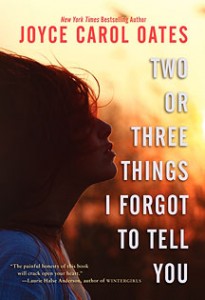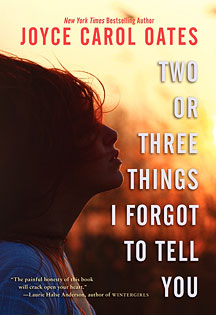 This book is not for the fainthearted. It’s also not for people who get frustrated by what is either poor structure and editing or a purposeful writing strategy that is at best confusing and at worst, amateur. I figured from the beginning I was in for a rough emotional ride, but from someone as accomplished as Joyce Carol Oates, I had expected a finer hand at what could have been a powerful, if not entirely original, story.
This book is not for the fainthearted. It’s also not for people who get frustrated by what is either poor structure and editing or a purposeful writing strategy that is at best confusing and at worst, amateur. I figured from the beginning I was in for a rough emotional ride, but from someone as accomplished as Joyce Carol Oates, I had expected a finer hand at what could have been a powerful, if not entirely original, story.
Tink d**d in the spring of junior year, and pretty much everyone is convinced she k****d herself, but no one knows for sure. Her closest friends, the girls who called themselves Tink, Inc., still can’t believe she’s gone, and they’re each wracked with guilt about how they must have let their friend down – why else would she have just left them? The girls share each others’ pain, but they also each harbor secret feelings and memories about Tink and wonder, desperately, if they are somehow to blame for their best friend’s absence. Of the group, Merissa, “Perfect One,” and Nadia “Slut,” seem to need Tink the most. Merissa, while seeming to have it all, is secretly falling apart: her parents are getting a divorce; the stress of her perfection is more than she can bear on a daily basis; and she’s taking to cutting to alleviate the massive amounts of pressure and shame she feels. Nadia, a naive, buxom young woman, seeks out attention and kindness from all the wrong people. When Nadia becomes convinced that her cute Earth and Our Environment teacher, Mr. Kessler, feels the same about her as she does for him, she makes choices that are not going to be very easy to make right. Both girls yearn for Tink’s advice and no-nonsense support and her absence makes their downward spirals even more precarious.
Two or Three Things I Forgot To Tell You is a messy book. I’m ultimately choosing to believe that the run on sentences, multiple POVs, narrator-hopping, detail altering, timeline jumping and mish-mashup of the plot elements is intentional; Oates wants to show the messed-up, severely damaged psyches of these troubled young women by dropping us into a mess of a story. The book feels disjointed with the focus on two of the girls from Tink, Inc. (Why these two? Why not delve into each girl’s secrets, scars, and insecurities and weave their pain and recovery together?) without really connecting them back to their friend who was “so brave” (brave enough to say “screw it” to the hypocrisy of the world and kill herself?). At the end, Oates suggests that what we all thought about Tink maybe wasn’t the truth, but its a speculation that’s too little too late.
- Posted by Cori

